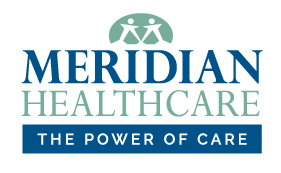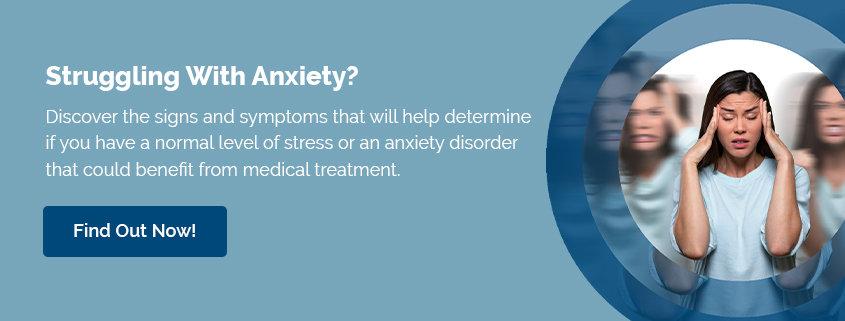What Are the Most Common Mental Disorders?
Just like a broken bone, mental illness should be diagnosed and treated. However, it’s estimated that half of those with a mental health disorder never receive the care they need. Mental health problems are extremely common and affect millions of people. Here are some of the most common mental disorders that can affect a person’s ability to function on a day-to-day basis.
**If you feel like you might have a mental health disorder, do not self-diagnose. Instead, reach out to a mental health service provider.
Anxiety Disorder
Generalized anxiety disorder is the most common mental illness in the United States.
While anxiety is a common emotional response that every person experiences from time to time, an anxiety disorder affects a person’s daily life and relationships. Problems can range from mild cases (where the person may not even recognize symptoms are present) to severe and debilitating anxiety.
Mental health isn’t one-size-fits-all. Every person is affected differently, and something that causes intense stress for one may not bother another at all.
Social Anxiety Disorder
People with social phobia, also referred to as social anxiety disorder, have extreme fear or anxiety when in social settings and often have trouble meeting new people or going to social gatherings (even if they are familiar with everyone attending).
Social anxiety is more than simply being shy – it affects a person’s work and relationships and can, in some cases, be debilitating. The prevalence of social anxiety disorder is widespread and affects about 15 million Americans, according to the Anxiety and Depression Association of America (ADAA).
Panic Disorder
Panic disorders are characterized by extreme, repeated attacks of intense fear and can cause an accelerated heart rate, chest pain, trouble breathing and dizziness. These attacks often give little to no warning before they begin, which can result in even more overall anxiety.
Phobias
While everyone has irrational fears, those with a phobia disorder have an intense fear of a specific object, subject, or activity. In extreme cases, people can even experience a panic attack if exposed to that particular fear. Because of this, those with phobias may alter their daily lives to avoid their specific phobia entirely.
Post-Traumatic Stress Disorder (PTSD)
A common misconception about post-traumatic stress disorder (PTSD) is that it has to come from a singular traumatic event. Most don’t realize that PTSD can also be caused by multiple smaller events (or a long-lasting traumatic experience, like living through a worldwide pandemic).
A person with PTSD may relive their traumatic experience over and over again in his or her mind, taking the form of flashbacks or nightmares, which often leads to trouble sleeping, stress and fear.
Obsessive-Compulsive Disorder (OCD)
About two percent of American adults have had an obsessive-compulsive disorder in their lifetime, according to the National Institute of Mental Health (NIMH), and the condition is equally common in men and women. It usually begins in childhood or early adolescence and often runs in families. OCD is a mental health condition that involves two main parts: obsessions and compulsions.
Obsessions are unwanted thoughts, images, or impulses that make you feel anxious, angry, or afraid.
Compulsions are behaviors or rituals done repeatedly (often performed to try to make the obsessions go away). Some people with OCD wash their hands or clean certain items because of germs. Others count things (like tiles in a bathroom) or check things (like door locks) over and over again.
*If your anxiety is getting in the way of daily life, it’s likely time to speak with a mental health professional.
Depression
According to the National Institute of Mental Health (NIMH), depression affects all demographics regardless of age, gender, race, or ethnicity. In fact, 8.45% of all U.S. adults (21 million) have had at least one major depressive episode.
Major Depressive Disorder
Major depression is the leading cause of disability in the U.S. for ages 15 to 44, according to the CDC. People with major depressive disorder experience a variety of symptoms, though they can vary from person to person (and even episode to episode). Major depression warning signs can include the following:
-
- Feelings of sadness and/or general loss of interest
- Helpless and hopeless feelings
- Restlessness or irritability
- Changes in appetite
- Sleeping too much or having trouble sleeping
- Anger or rage
- Loss of energy, fatigue
- Self-loathing, guilt, or worthlessness
- Reckless behavior or substance abuse
- Difficulty concentrating
- Suicidal thoughts or attempts
While substance abuse can be a warning sign of depression, substance use disorder is a disease in and of itself (which affected more than 40 million people (aged 12 or older) in 2020 alone).
Seasonal Affective Disorder
Seasonal Affective Disorder (SAD) is a type of depression that occurs at the same time every year. Most people with SAD have symptoms that start in the fall and continue into the winter months.
SAD is sometimes called “winter depression” because the symptoms are more apparent and tend to be more severe during the winter. When SAD symptoms improve during the spring and summer months, it’s known as a “reversal pattern.” SAD affects about 1% to 2% of the population, according to the National Institute of Mental Health, and is much more common in women than men.
Bipolar Disorder
An estimated 4% of adults experience bipolar disorder at some time in their lives, according to the NIMH. Bipolar disorder is a mood disorder where the person experiences extreme mood swings from high energy and manic feelings to a low, depressive state. When in a low-mood state, people typically experience many common symptoms of depression.
Depression doesn’t only consist of extreme symptoms in short periods. In fact, dysthymia is a type of depression with mild symptoms that can last for years at a time, affecting about three million Americans annually.
*There is no single way to experience depression. If you believe you may have a form of depression mentioned above, talk to a mental health professional.
Eating Disorders
Eating disorders are mental illnesses that center on food, weight, and body image. There are three main types of eating disorders: anorexia nervosa, bulimia nervosa, and binge eating disorder.
Eating disorders are far more common than you might think. Some estimates have shown that as many as 70% of people have disordered eating patterns at some point in their life but don’t necessarily fit the strict criteria for diagnosis.
An eating disorder greatly impacts a person’s health and well-being. Many risk factors can lead to an eating disorder, including biological, psychological, and sociocultural issues.
Anorexia Nervosa
Anorexia nervosa is an eating disorder that causes people to obsess about their weight and what they eat. It is one of the most common mental disorders, with around 1 in 250 women suffering from it at some point during their lifetime.
Anorexia usually starts in adolescence or early adulthood, but it can develop at any age. It is more common in women than men and is a serious illness that can be fatal if not treated properly. However, many people can and do recover.
Binge Eating Disorder
Binge eating disorder, or BED, is the most common eating disorder in the United States. It is characterized by recurrent episodes of eating large quantities of food in a short amount of time.
Binging usually occurs alone and in secret due to feelings of shame and guilt. Often, binge eating disorders aren’t recognized by family members, friends, or doctors, which means it may be underdiagnosed. Binge eating disorder affects 2.8 million adults in the United States.
Bulimia Nervosa
Bulimia nervosa is an eating disorder characterized by binge eating followed by purging. Binge eating refers to eating a large amount of food in a short period of time. Purging refers to the attempts to get rid of the food consumed. This may be done by vomiting, excessive use of laxatives, diuretics, fasting, or excessive exercise.
According to the National Eating Disorders Association (NEDA), at any given point in time, 1.0% of young women and 0.1% of young men will meet diagnostic criteria for bulimia nervosa (and an estimated 2% to 3% of young women suffer from bulimia nervosa at some point in their lives).
*Eating disorders are highly prevalent in America and can be deadly if not treated. It may be hard to spot in a loved one or recognize it within yourself. If you have concerns, please reach out to a professional.
Attention-Deficit/Hyperactivity Disorder (ADHD)
ADHD is one of the most common disorders diagnosed during childhood, but it can last into adulthood. ADHD is marked by trouble paying attention, impulsive behaviors, or being overly active.
With ADHD, it’s important to see a mental health professional and not self-diagnose since children often have trouble focusing even when they don’t have ADHD. (When no disorder is present, symptoms often dissipate with age.)
Talk to a Professional
Mental illness is highly prevalent throughout the United States and affects millions of people each year. If you or someone you know needs help with depression, anxiety, personality disorders, schizophrenia or another common mental health disorder, see a healthcare professional who is trained to address common mental disorders. (Remember, mental health disorders can be treated with medication (like antidepressants) and/or psychotherapy (like counseling), depending on severity and diagnosis).
There is never a perfect time to get help — but when you’re ready, so are we! Call Meridian HealthCare today to start your road to a healthier, happier life.
*If this is an emergency, please call 911 or the suicide helpline at 1-800-273-8255.






